tp link range extender setup without wps
When you order Internet service for your home or office, you will invariably end up setting up a complete home network. This permits all your devices – tp link wifi extender setup with wps computers, tablets, smartphones, printers and scanners, smart TVs, and connected devices like smart outlets and appliances – to use the network connection. This is almost always done by means of a router, a box that connects to your cable modem or satellite modem and distributes Internet services throughout the area, both wirelessly and using Ethernet cables. (Many service providers combine the router and the modem into one unit, but that will not make any real difference to consumers.) tp link range extender setup without wps
How To Setup a TP-Link Extender
Wireless Range – Theory and Practice
One common problem that wireless network installations often run into is the fact that radio waves, which WiFi networks use to communicate, carry very well through open-air, but are much less effective when asked to propagate through solid objects, such as walls or doors. Radio waves can penetrate such obstacles, but it uses up a considerable fraction of their power to do so. You may note that a piece of wireless hardware has a nominal range of 600 feet, for example. And if you set that equipment up outside, in perfect weather, in a giant open field, with nothing in between the two network components, you would indeed find that they would work pretty well even if they were 600 feet apart.
Now do the same thing inside a house full of walls and refrigerators, doorways and staircases. Your network might have trouble reaching something 60 feet away, just 10% of the nominal range. Weak WiFi can be extremely frustrating and can have a number of different causes. You may have a router that simply doesn’t broadcast with enough power to reach all the nooks and crannies of your home, or there may be obstacles in the way of the signal. Obstacles are generally things like especially thick walls or floors, but other household items can and do cause signal problems. I once spent about four hours trying to figure out why a wireless router wasn’t able to reach quite nearby rooms in my home before realizing that I was asking the signal to go directly through a home gym setup – about 500 pounds of cast iron directly in the signal path.
If you have a large home or office or are trying to extend your Internet connection to an outlying building such as a shed, garage, or patio area, then a wireless network extender may be the product that you need. TP-Link is a networking company that makes a wide variety of networking products, from whole-home wireless routers to range extenders to modems and switches. For this article, we will concentrate on their line of range extenders. Range extenders are generally inexpensive and they work very well, but home networking can be something of an acquired skill. In this article, you will learn how range extenders work, why you might need one (or more), and how to set up your TP-Link extender model.
How Range Extenders Work
Wireless network extenders work by receiving and rebroadcasting WiFi signals from your wireless router in order to boost signal in areas that may have been physically blocked before hand. There are two basic types of extenders: antenna based extenders, which basically just add another broadcasting node to your network, and power-line based extenders, which use your home’s electrical system as a wired network to transmit wireless signals across (or through) obstacles.
For example. take a look at this typical house plan. The router is located in the living room. Areas of a strong signal, good signal, weak signal, and no signal are indicated on the plan (note that this is a simplified example; in real life, a house this size would be adequately served by one router, but I don’t want to fill your screen with a giant house floorplan.)
In this example, there is a good signal in most of the house, but in the bedrooms on the left side of the plan, there is an only a weak signal or no signal at all. This problem could be resolved by moving the router to a more central location, but that might not be convenient or possible. However, you could place a wireless extender in the hallway leading from the living room to the bedrooms. That would change the signal map to look something like this:
Maximizing Network Range
There are things you can do to maximize your range that might save you from needing to install extenders. Many people simply stick their network router wherever it’s convenient and hope for the best – and in a small apartment or house, that is usually perfectly adequate. Homes and businesses with larger or more complex layouts, however, need to plan to get the best range and performance out of their network. It’s important to remember that for a wireless network, throughput/speed and distance/signal strength are related; the same computer will get a much faster network signal at ten feet from the router through open-air than it will at sixty feet from the router through three walls and a stairwell.
There are three main factors to consider: barrier thickness and material type, sources of interference, and the physical environment of the antennas in operational conditions.
Barrier Thickness
Every physical barrier will affect the strength of a wireless connection. A single ordinary wall can reduce the signal by 25 or even 50 percent. There are two factors to consider: the thickness of the barrier and its material composition. Plywood, drywall, ordinary wood, and regular glass are all relatively porous to radio waves, and won’t damage your signal too severely. Heavier walls made from brick, cement, metal, plaster, stone, or double-glazed glass is significantly more resistant, as are floor and ceiling panels. In general, non-porous materials are much more resistant to radio waves than porous materials. Elevators and stairwells, which both often contain large quantities of steel, are challenging terrain for radio waves.
Electromagnetic Interference
A major source of network slowdowns and unreliability is the presence of electromagnetic frequency. Many of the devices we rely on in modern life all share the use of a relatively narrow range of the electromagnetic spectrum. The problem is further complicated by the fact that current home and office WiFi technology uses two different frequency bands to connect, and a different set of electronic equipment also uses each of those bands. The older 2.4 GHz frequency is a bit better at punching through obstacles than the newer 5 GHz band; the 5 GHz band has a slightly higher top speed. However, in most situations, the network frequency doesn’t make a major difference.
Microwave ovens also use the 2.4 GHz band, as do 2.4 GHz cordless cell phones, some fluorescent bulbs, video cameras, elevator motors, cauterizing devices, plasma cutters, BlueTooth devices, old-style 802.11, 802.11b, and 802.11g wireless networks.. The 5 GHz band is used by 5 GHz cordless phones, radar, certain kinds of sensors, digital satellite signals, nearby 802.11a or 802.11n wireless networks, and other outdoors 5 GHz bridges.
Physical Environment
The physical alignment of WiFi antennas can be essential to performance. For example, a signal expected to travel down a long narrow hallway should have a semi-directional antenna pointing the signal in the right direction, rather than a multidirectional antenna that radiates equally in all directions. For outdoor situations (such as installing wireless surveillance cameras), be aware that precipitation (rain, snow, even fog) can be disruptive to range and speed. Both trees and large numbers of people can attenuate the signal. Finally, position access points, routers, receiving antennas, etc., as high up off the floor as is reasonable. Signal strengths are almost invariably highest at the height of the room.
What Kind of Extenders Are There?
There are a number of different types of hardware that can extend your WiFi network, and what you should get depends in large part on your networking needs. Here I am going to break out the two basic categories of WiFi boosting technology and how they function.
WiFi Repeaters
WiFi repeaters were the first type of technology that could extend a WiFi network. Repeaters work straightforwardly – the repeater contains a wireless antenna, and the device connects to your existing WiFi network just like another computer or smartphone would connect. It then rebroadcasts that signal in its local area, as well as picking up the signals from other devices in the area. For example, if you have a laptop that is closer to the WiFi repeater than to the router, it will connect to the repeater rather than directly to the router.
WiFi repeaters have some significant disadvantages. The primary downside is that because their connection to the router uses the same radio waves as many other technologies in your home, the repeater’s link is susceptible to interference from other devices. Phones, microwave ovens, and many different types of devices can cause interference, which ends up causing the connection to the router to slow down or even to drop altogether. The other main disadvantage is that WiFi repeaters use the same frequency to connect both to the local devices and the router. This means that half the repeater’s bandwidth is available for the locally connected devices; WiFi connections for those devices will accordingly be slow.
Because WiFi repeaters are using a wireless signal, they must have a clear signal path back to the router. Walls, doors, floors, and ceilings all block significant portions of the radio signal from being transmitted. Also, the distance of the repeater from the router will significantly impact the signal strength; a repeater at the extreme range of the router will be of very little use because it will have a prolonged and weak signal.
There are applications for which a WiFi repeater may be appropriate. For example, a case where you have one area of the house that needs more signal where the main router won’t quite reach. Where no heavy applications are to be expected – perhaps a guest bedroom where the only need for Internet access will be an occasional overnight visitor who wants to use their smartphone, repeaters may also be the only viable option in a house without coaxial cable ports and in which the power wiring of the house is not suitable for an extender. But in general, this is older technology and should not be your first choice.
WiFi Extender
WiFi extenders are more advanced technology for extending a WiFi network. They have critical improvements over WiFi repeaters, with the main one being a technology called “backhaul” which extends your signal without using up wireless bandwidth. The concept of backhaul is a fundamental part of telecommunications technology, and it means carrying a signal from one site to another using a high-capacity physical cable or line. WiFi extenders use backhaul by connecting the router end of the extender to the extender module itself over a wire. In-home and office installations, the cable can either be the building’s existing electrical wiring, or the building’s existing coaxial cable wiring. The backhauled signal goes back and forth over the physical connection. The WiFi extender itself then acts as a clone of the existing router/modem, providing a new radius of wireless service that is very fast. tp link range extender setup
Two types of wiring can be used with a WiFi extender. Many homes and offices already are wired with coaxial cable from cable television installations or older network technologies. This coaxial cable has a huge transmission capacity, most of which will go unused even by the most advanced digital cable systems. The standard method for using this cable for WiFi extension is known as Multimedia over Coax Alliance (MoCA) and is designed not to interfere with existing cable TV usage; your Internet and your cable TV will be using the same wiring, but will not interact. For a MoCA install, you would connect one MoCA adapter to the router and a coaxial cable port, and then connect another MoCA adapter at the location where you want to place your WiFi extender. tp link wifi extender setup without wps






